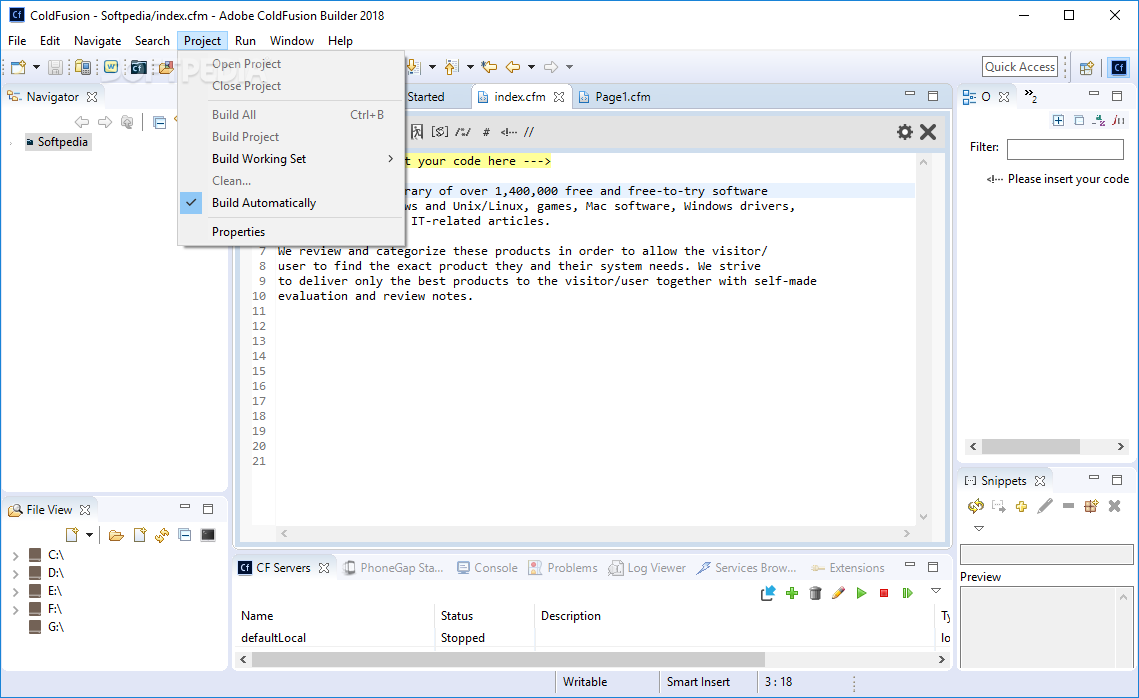

In this section, we'll review how ColdFusion can access data and use it in a variety of ways. How ColdFusion Provides Data Science Through Coding

Now that you've had a brief introduction to the product, let's take a look at how ColdFusion can be utilized in data science applications. This is a "WYSIWYG" ("what you see is what you get") editor that allows site authors to make changes from a GUI, rather than solely through code. The ability to manipulate most types of filesįinally, CFStudio was a major addition to the ColdFusion suite. Server clustering and task scheduling capabilityįully customizable graphs and reports about server accesses, queries, and more Integration with Apache Solr to allow for file searching and indexingĬustomized scope definitions for servers, clients, sessions, and requests Its toolkit, which we will explain in greater detail later, serves as a complete machine learning solution and can handle very large data quantities!ĬoldFusion has a good deal of extensions and versatility that the user may customize, but here are the core features you need to know:Ĭache management for both client and serverĪbility to generate client-side code "on-the-fly"Ībility to retrieve data from just about any storage solution, from Active Directory to Microsoft Exchange Server Over the years, and especially after being acquired by Adobe, ColdFusion has developed into a full suite of tools to create content-rich, data-driven websites. It was extended to support the usage of scripting languages within CFML, such as ActionScript. Released in 1995, ColdFusion initially had a very minimal set of features. This defines the content to display on the page as well as dynamic actions through use of scripting, very similarly to how JavaScript is commonly used across the web. It uses "ColdFusion Markup Language" (CFML), a server-side language that is syntactically similar to HTML. Adobe ColdFusion is an all-in-one rapid web application development toolkit.


 0 kommentar(er)
0 kommentar(er)
